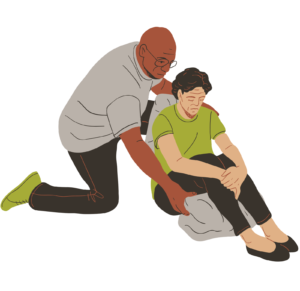Now that we are familiar with the nature of Heart Attacks; their causes, risk factors and symptoms, what happens when you’re face to face with someone exhibiting these symptoms in an emergency situation?
What happens next?
I would like to emphasise that the most important thing to do in an emergency situation with an identified Heart Attack is to alert an emergency response team.
As with many emergencies, time is crucial in a Heart Attack. According to MedlinePlus, on average, a person waits 3 hours before seeking help for symptoms of a heart attack. Consequently, many heart attack patients die before they reach a hospital. The sooner the person gets to the emergency room, the better the chance of survival as prompt medical treatment reduces the amount of heart damage.
So what do you do if you suspect someone may be having a heart attack?
- Alert an emergency response team/ transport them to a hospital
- Have the person sit down, rest, and try to keep calm.You could place cushions behind them or under their knees (As seen in the image below)

- Loosen any tight clothing.
- Help administer Medication:
(i)Ask them to chew a regular sized aspirin, unless they are allergic to it or have been told by a doctor never to take aspirin. But seek emergency help first.
(ii)Ask if they have any prescribed chest pain medicine, such as nitroglycerin, for a known heart condition, and help them take it.
- Begin CPR if the person is unconscious. I’d advise that you only do this if you have authorised training to, otherwise stay in touch with the emergency team for instructions.
The steps above apply if you suspect you might be having an attack yourself. If possible, try and get someone to help you with the steps and only drive yourself to a hospital as a last resort.
References and Further Reading.






